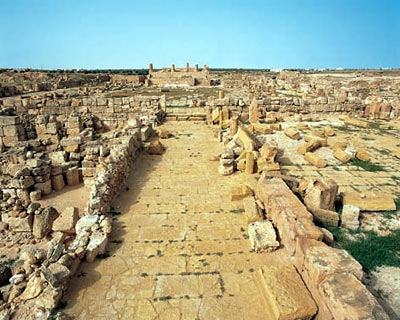
But in doing so, we miss the wealth of this corner of Tunisia called the peninsula of Zarzis and whose immortal popular song teaches us (gâlou nawwar, zitoûn fî Zarzis) that it is a country where The olive trees also bloom.
Yes, there are many olive plantations on the Zarzis peninsula, and even among the most important ones in Tunisia, which allows the region to be considered as one of the main producers of olives and olive oil. Olive of the country. But the peninsula has many other assets that most people do not know. For this reason, we invite you to take a tour of the estate with us.
We started the visit of the Zian Peninsula (I like to call it it first because it bore this name in Antiquity then to recall the former name of the current head of the delegation, Zarzis ), So to speak, at its birth, at the bottom of the Gulf of Boughrara, not far from a salt depression, and we have completed it near another depression of the same nature, at the bottom of another gulf, El Bibane.
The Gulf of Boughrara is named after a small village of fishermen who, in recent years, takes on the appearance of a small town which flourishes close to its eldest, Gightis, which was a true regional capital in Punic antiquity and Roman.
Although away from the main road linking Carthage to the Tripolitan province, Gightis was a city of considerable strategic and economic interest, its position at the bottom of a gulf and the proximity of a rich countryside by making an Ideal site for the establishment of a port open on the main Mediterranean squares.
Jenina Akkari-Weriemmi, a native of the region and an archaeologist, tells us in a fascicle published by the Agence du Patrimoine that the foundation of the city dates back to the Punic period, as evidenced by the existence on the site of two necropolises dating back to the III ° and II ° sicles before JC Annexed this same century to the numide territory of King Massinissa, it was integrated into Africa Nova in the 1st century AD The urban development, economic and social development of the city is at the end Of this century to reach its apogee between the II and IV centuries. It gradually declines with the turbulence that befell the African province before disappearing in the aftermath of the Arab conquest in the seventh century.
From this prosperity, Gightis now retains traces in the form of vestiges that stretch over 55 hectares and of which only small islets have been cleared or consolidated. These are baths (public baths) located in front of the entrance of the site and which have been uncovered in recent years; It is also the forum (public square adjoining the main temple of the city) of which the paving remains in a perfect state of conservation; The base of the temple itself (the capitol) with the steps leading to the podium.
Around the forum, very old excavations have allowed the release of many other buildings such as this other thermal complex, temples dedicated to the gods Mercury, Esculape or Apollo as well as administrative or commercial facilities.
The site also provided valuable items: mosaics, ceramics or glassworks and beautiful sculptures on marble, such as the statue of the 2.30 m high Concorde Panthea now preserved in the Bardo Museum.
The site seems to have drastically suffered from the climatic conditions of the region (sea spray and hot winds) as much as to let go for too long time. To be convinced, it is enough to visit the museum of the city of Zarzis where are exhibited many objects coming from here but, above all, a model of the place executed at the beginning of last century which testifies of a much better Conservation of the site and where the capitol seemed to compete with that of Dougga. Today the site is fenced (entrance fee) and well maintained. And, notwithstanding the relative modesty of the size and number of the monuments that compose it, it nonetheless retains a certain certainty that largely justifies a visit that can be pleasantly completed by a stroll along the seaside, on the side Of the fishing port.
Tahar Ayachi
Where toi sleep ?
Where to eat ?
{mainvote}


 َAbonnez-vous
َAbonnez-vous

